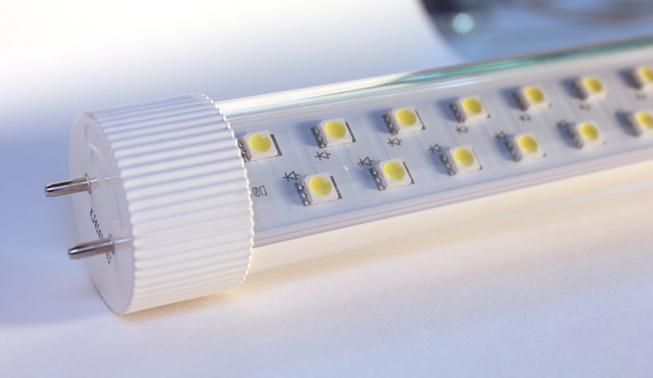Telefunken driverless LED technology

In ordinary T8 LED tubes, the driver converts 240V AC mains power to 12V DC, which LEDs can use. It is a complicated device typically containing more than one hundred electronic parts: capacitors, resistors, temperature sensors and chips. These generate significant amounts of heat, which is why T8 tubes require aluminium heatsinks on the back of the tube.
Telefunken’s measurements of competitor tubes reveal temperatures, averaged over the back of the tube, between 60°C and 90°C. This is electricity wasted in the production of heat, not light.
ADVERTISEMENT
That’s not the only problem with traditional T8 LED tubes. The reason they can’t guarantee long service life is that the driver is always the first part to fail. The large amount of heat emitted by the driver itself means that capacitors begin to dry out and circuit connectors fail, and typically, a three year service life is all that can be expected.
Telefunken’s driverless design has removed this weakness from the tube and uses only solid state devices to regulate the LED tube.
To the installer, driverless technology means Telefunken tubes have a rated service life of 100,000 hours, more than eleven years of 24/7 operation. And we are proud to offer an industry-first five year guarantee on the whole of the tube, backed by the manufacturer.
Driverless also means unparalleled efficiency: our tubes output 100 lumens per watt.
That means 2200 lumens from the 22W tube and 1400 lumens from the 14W model.
2200 lumens from the light-emitting side of the tube means comparable light output to a brand-new triphosphor 36W fluorescent.
A light output of 91 lux at 3m means the tubes conform to Australian Standards on office desktop and floor space lighting.
-
ADVERTISEMENT
-
ADVERTISEMENT

